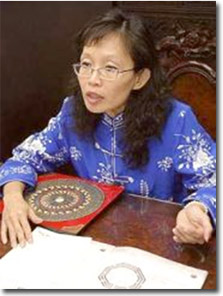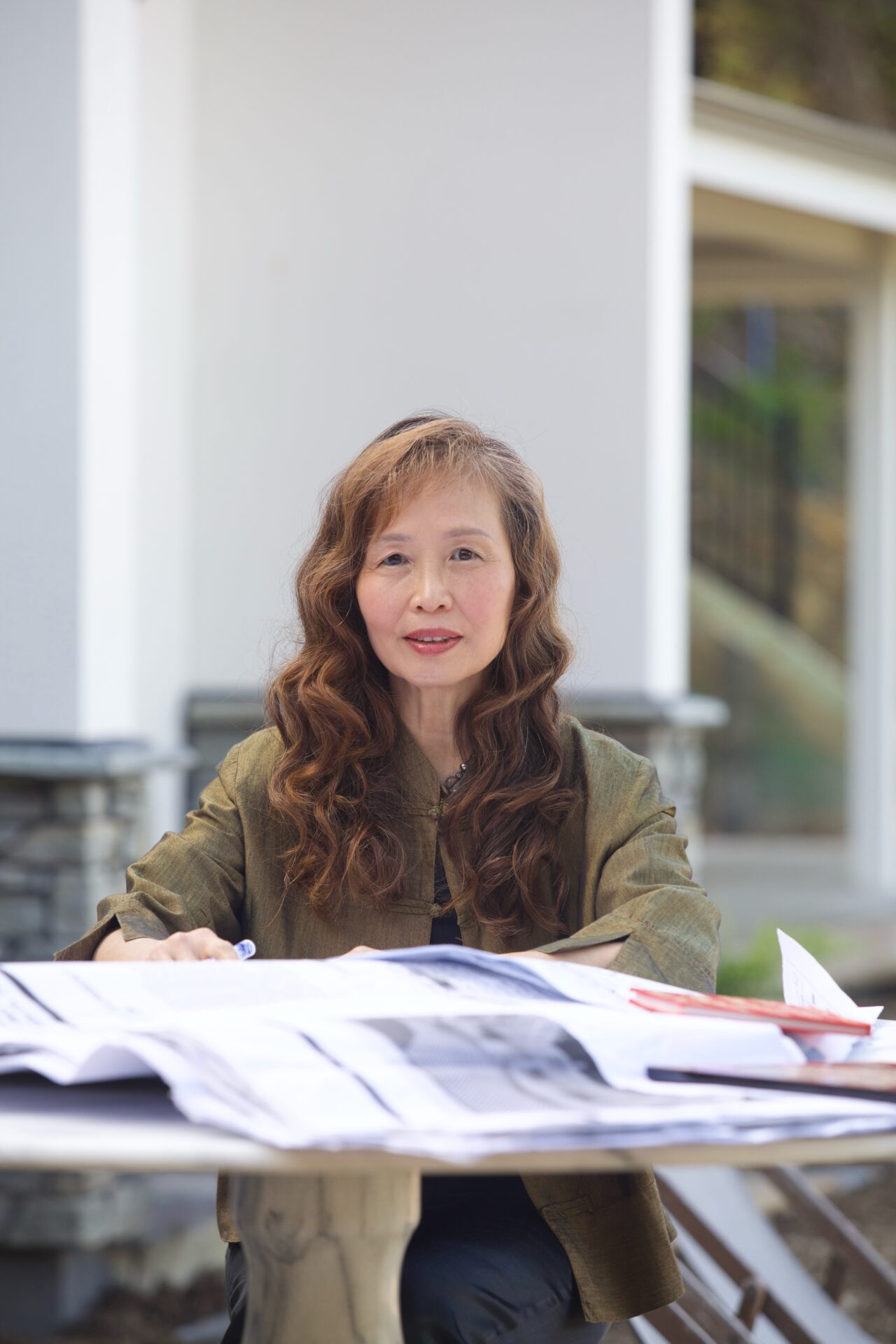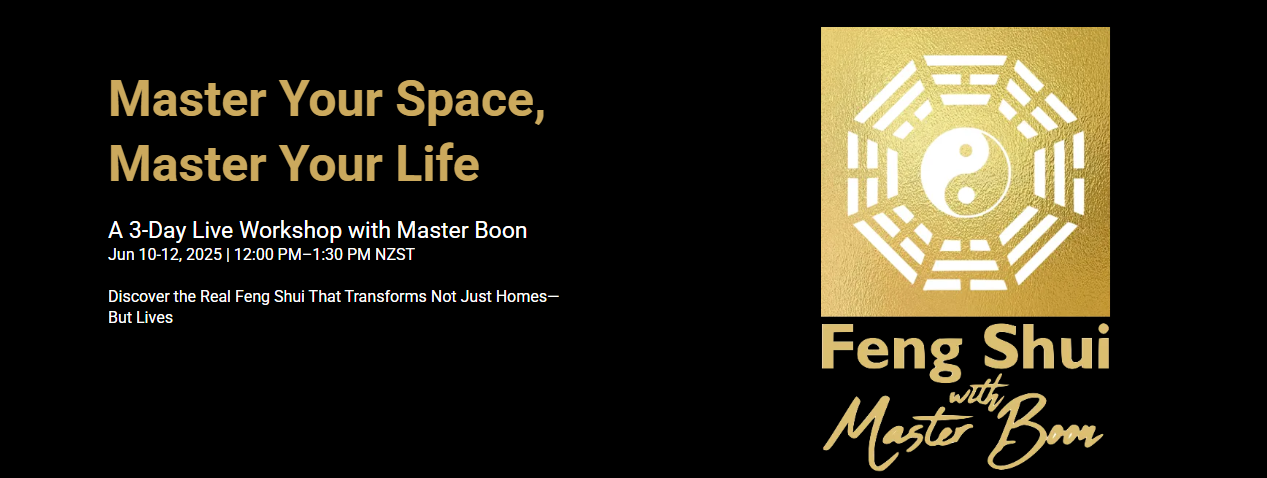The Star Lifestyle, March 23, 2005
By Majorie Chew
When feng shui consultant Boon Yap moved into her new apartment in Melbourne, Australia, she positioned everything in it according to feng shui principles. All seemed fine for about two years.
She was satisfied that her home had good feng shui but was puzzled why things were at times rather chaotic. It was then that she decided to take another reading of her main door using her geomancer’s compass.

Boon held her feng shui compass against various parts of the door, also veering from side to side, back and forth, in her attempt to double-check the readings.
“The readings from against the door alone varied by as much as 40 degrees and that was indeed strange,” says Boon of her many attempts to get the precise reading of her front door. “It was very difficult to get a consistent reading for my front door. By right, there should be only one reading.”
The source of the problem was the magnetic influence of the iron balustrade of a flight of steps leading to her front door.
Boon tapped into her inner spirituality and told herself that the new reading she was going to take would be the real reading of her front door. “And what do you know! Finally, I got the true reading of the entrance to my home and it was ‘dead’ north,” she says.
But this was a bull’s eye that one does not look forward to. Certain directions of the compass are called “death and emptiness” lines according to classical feng shui which warns us to best avoid these lines.
Explains Boon: “The compass reading of zero degree, for example, is dead north and if a door faces this direction, it is a violation of a major death and emptiness line.
“Zero degree is too powerful for normal people but it’s good for kings (palaces) and spiritual centres.”
“So one has to be extremely careful with such a simple thing as obtaining the measurement of a door, as feng shui has a strange way of challenging the practitioner. Often one has to call upon one’s intuition that only comes from experience and pureness of intent.”
Her solution to the direction the door was facing was “to tilt her door frame to a reading that corresponds to auspicious qi (energy) based on several systems of feng shui.” She called in her carpenter, an Australian, to make the necessary changes.
She quips: “I’ve taught him how to hold the feng shui compass (luo pan) to get the reading of the door and he has since become very good with this geomancer’s compass. Confident of his work, I engaged him as my feng shui renovator and recommended him to many of my clients.”
Boon, a scientist by training, has since been living in the apartment, which doubles up as her office for the last 14 years.
She has a Masters in Science in medical research and a Masters in Business Administration and is based in Melbourne. She runs a successful business consultancy in strategic marketing and international business development for the biomedical industry throughout Asia Pacific.
As a scientist, Boon likes to test the validity of various feng shui principles. Boon decided to change the position of the back door to her apartment in the direction of “total prosperity” from south to south-east – a good 45 degrees,” she says, adding that she has “people coming in and out who didn’t realise that it is not the original door. Subsequently, my business further improved.”
Boon cited this as an example where good feng shui alteration is not obvious. It is often subtle and fits the look of the place.
Boon is the only daughter of prominent local feng shui grandmaster Yap Cheng Hai and her courses and practice follow her father’s wisdom.
The Yap Cheng Hai lineage, she says, is the first to fully integrate the different and often apparently contradictory schools and systems of feng shui. She was brought up immersed in feng shui and honed her knowledge and skills through formal study.
In recent years, feng shui has been represented in a simplistic way. Boon runs a feng shui consultancy business and is director of Feng Shui for Enriching Lives. She believes the multi-faceted aspects of feng shui need to be better communicated as it is a complex discipline.
Death and emptiness lines come under the feng shui topic of San He School of feng shui “Killing Forces” which will be taught in Boon’s forthcoming Intermediate Feng Shui Practitioner’s Course from April 8 to 10, 10am to 5pm, at Holiday Villa, Subang Jaya, Selangor.
Other “Killing Forces” including Eight Palaces Yellow Spring (Eight Killing Forces), Eight Roads Yellow Spring (Eight Roads of Destruction), Peach Blossom Killing, Frightened Goat Killing, Triple Punishment, Six Harms and Four Destructions, are formulae to identify negative energies to be avoided.
Intermediate Feng Shui Practitioner’s Course presents many of the principles of San He and San Yuan Schools of feng shui, including the Mountain and Dragon Formation theory and the details of Xuan Kong Fei Xing (Xuan Kong Flying Star System).
Prior to this, Boon will teach Elementary Feng Shui Practitioner’s Course from April 2 to 4, 10am to 5pm, at the same venue.
Elementary Feng Shui Practitioner’s Course presents the fundamental principles, knowledge of the major systems and the vital secrets of effective application that have been proven to work.
“It begins with understanding the ancient classics, followed by principles of Forms, Eight Mansions (Ba Zhai) and an introduction to Timing Influences. It concludes with highlights of practical application,” says Boon, who emphasises that this intensive three-day course is structured to provide the foundation for subsequent learning.
It is for beginners, self-taught practitioners in search of formal instruction, experienced practitioners who wish to complement their knowledge and refine their skills, and those who seek clarification between ancient and other versions of feng shui.
Eight Mansions will be one of the topics covered under Introduction to Ba Zhai (system of) Feng Shui in this elementary feng shui course.
Boon says: “If there is time to learn just one feng shui formula, this is one that my father recommends and it’s relatively simple to use and a very effective formula.”
This feng shui system also has “timing influences” and one will be able to learn what are the times in which the direction of sheng qi (total prosperity) is at its strongest or weakest. You can attain ultimate prosperity by tapping into sheng qi direction when it is strongest.
Similarly, one needs to know the times when the direction of jue ming (total disaster) is at its strongest or weakest.
She says: “You want to be exceptionally careful when you are positioned in an inauspicious direction (of total disaster, for example) which is at its strongest because if you can, you should correct the situation to avoid any misfortune.”
“The beauty of feng shui is that you can diagnose the (feng shui) problem to reveal the luck of the occupants of the building and correct it to improve their situation to ensure personal health, harmony and prosperity.”
Forward this information to your colleagues, friends or business associates who might benefit from this article.






